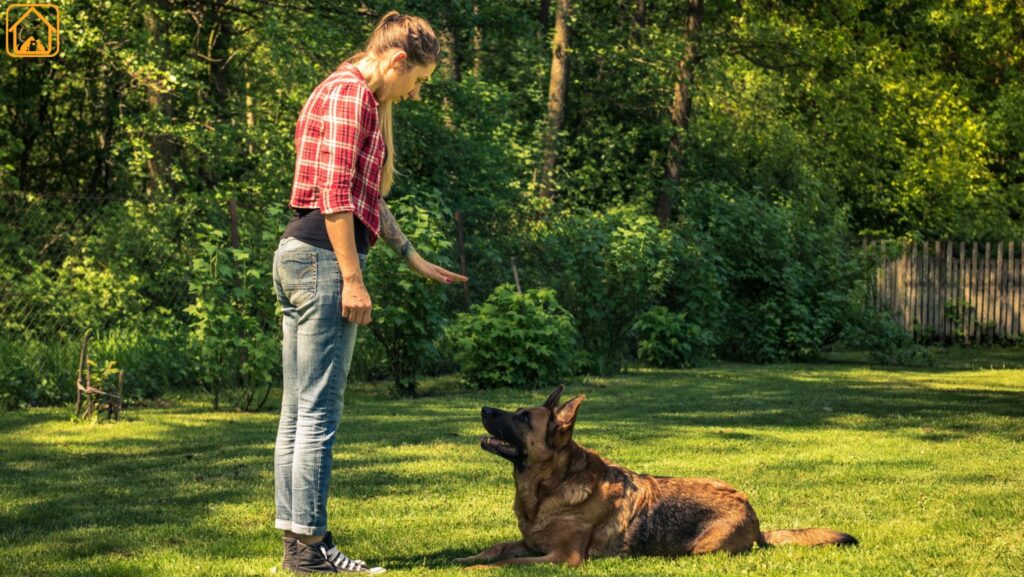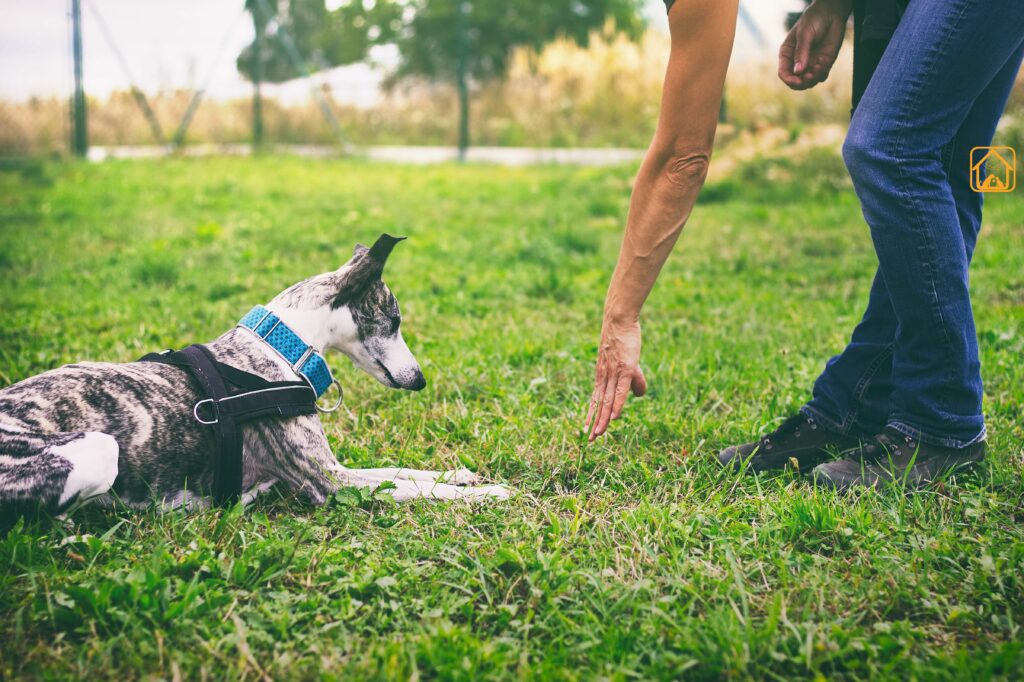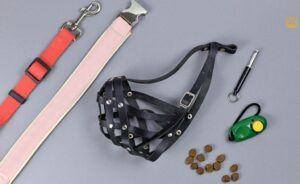Have you ever noticed your dog just won’t settle down, popping right back up the second you ask them to lie down? You’re not alone! Figuring out how to teach dog lie down can make a huge difference in your everyday life. It’s not just a cute trick for photos, it helps your dog learn to calm themselves, listen better, and stay safer in busy or stressful situations.
Why Teaching ‘Lie Down’ Is Essential for Dogs
Teaching your dog to lie down isn’t just about a part of obedience training, it’s about creating a calm, safe space for your pup. When you teach dog lie down, you’re giving them a tool to settle themselves in exciting, stressful, or chaotic situations. I’ve lost count of the times I’ve used the down command to stop my dog from jumping on guests or darting out the door.
This cue also helps with impulse control. Imagine needing your dog to settle during a vet visit or when guests arrive. The ability to ask for a down and get it reliably can be a game-changer. Plus, a relaxed dog is less likely to get into trouble or feel anxious. Consistent down training can even help curb behaviors like barking or begging at the table.
Understanding the ‘Down’ Command: Benefits & When to Use It
The down command is more than just ‘sit’s cousin. It’s a versatile behavior that signals your dog to lower their body to the ground and stay put. When you teach dog lie down, you unlock benefits like:
- Better focus in distracting situations
- Safer greetings around kids or elderly family
- Stress relief for anxious dogs
- Foundation for advanced training like stay and settle cues
Use the down command when you want your dog to relax at a cafe, wait at the vet, or settle at home. It’s also crucial for public manners, think outdoor roads or busy parks. A solid down can even prevent accidents by keeping your dog safely in place when needed.
Training Methods: Luring, Shaping, and Capturing the Down

When it comes to teaching your dog the “lie down” command, there’s no one-size-fits-all method. Different dogs respond to different styles, and as a trainer or pet parent, it helps to have a few techniques in your toolbox. The three most effective methods are luring, shaping, and capturing. Also, you can absolutely use a mix of all three.
Luring Method
Luring is the easiest way to start, especially with puppies or food-motivated dogs. Simply hold a treat near your dog’s nose and slowly lower it toward the floor. Most dogs will follow the treat with their head, and as they do, their body naturally slides into a down position. The moment those elbows touch the ground, praise and reward.
Shaping Method
Shaping breaks down the behavior into small steps. For example, you might reward your dog first for looking at the ground, then for lowering their elbows, and finally for lying fully down. This method works well for dogs who aren’t easily lured or need a confidence boost.
Shaping is like breaking the command into mini milestones. You reward your dog for each small step toward the final position.
- First, they look at the ground, give the treat.
- Then they bend slightly, give the treat.
- Eventually, they lie all the way down.
Shaping is great for dogs who are unsure or easily frustrated. It helps build confidence and keeps training pressure-free.
Capturing Method
Capturing is all about catching your dog doing the behavior naturally. If your pup lies down on their own, say “Yes!” or click, and give a treat. Keep repeating this, and soon your dog will start lying down more often, making it easy to add the verbal cue later.
Honestly, I’ve used all three at different times. Some dogs love food, some need baby steps, and others just surprise you. Mixing methods can help you find what clicks.
Step-by-Step Guide: How to Teach Your Dog to Lie Down
Whether you’ve got a bouncy puppy or a stubborn adult, here’s a simple, step-by-step method on how to teach your dog to lie down.
1. Start in a quiet space
Choose a calm, distraction-free area in your home. This helps your dog focus without being tempted by toys, noises, or smells.
2. Begin with your dog sitting
Ask your dog to sit first. If they don’t know how to sit yet, you can also teach this from a standing position, it just might take a bit more patience.
3. Get their attention with a treat
Hold a treat close to your dog’s nose. You want them curious and focused on the reward.
4. Lure the treat to the ground
Slowly move the treat straight down between their front paws. Most dogs will follow it with their nose, naturally lowering their body.
5. Be patient
If your dog hesitates or freezes, that’s okay. Some need a moment. You can slide the treat slightly along the floor or under your leg to encourage crawling. Reward even small movements toward the ground at first.
6. Mark and reward
The moment your dog’s elbows hit the ground, say “Yes!” (or use a clicker) and give the treat. This helps them understand exactly what earned the reward.
7. Practice a few times
Keep repeating the process for a few minutes. If your dog keeps popping up, pause, let them reset, and try again without frustration.
8. Fade the treat lure
Once your dog follows the hand consistently, practice the motion without the treat in hand. Use it as a hand signal and reward after they lie down.
9. Add the verbal cue
Say your chosen cue, like “Down,” just before giving the hand signal. With time, your dog will understand the word and respond without needing the hand motion.
10. Keep sessions short and fun
Training should always end on a positive note. Practice in short bursts for 5 to 10 minutes and stop while your dog is still interested.
Tip: If your dog struggles, try using a soft mat or towel. Some dogs are more willing to lie down on comfy surfaces. Be patient and go at your dog’s pace.
Adding Cues: Verbal, Hand Signals, and Release Words
To make your dog’s response rock-solid, combine a verbal cue for lie down, a hand signal for lie down, and a release cue. Most people use “Down” or “Lie Down” as the word, paired with a hand motion (like palm-down sweeping toward the floor).
- Verbal cue: Say your chosen word just before your dog lies down.
- Hand signal: Use the same gesture each time. Consistency is key!
- Release cue: Teach a word like “Okay” or “Free” so your dog knows when they can get up. This helps with duration and clarity.
Funny story, my own pup got so good at the hand signal, she’d flop down anytime I reached for the treat jar. Proof that dogs often learn our body language even faster than our words.
Using Treats, Clickers, and Positive Reinforcement Effectively
Rewards are the heart of dog lie down training tips. Use small, tasty treats your dog loves, think cheese, cooked chicken, or special dog treats. A clicker can help mark the exact moment your dog gets it right, but a happy “Yes!” works too.
- Reward promptly, as soon as elbows hit the ground.
- Keep treats pea-sized to avoid overfeeding.
- Gradually reduce treats but keep up the praise.
- Use the best rewards in more distracting places.
If you’re wondering how to teach a dog to lay down without treats, try using praise, petting, or a favorite toy instead. The key is making the reward valuable to your dog.
Troubleshooting & Common Mistakes in Lie Down Training
Sometimes, things don’t go as planned. Maybe your dog won’t lie down, or they pop up the second you move. Here’s what I’ve learned (often the hard way):
- Dog won’t go down? Try luring under a leg or using a blanket. Make the movement smaller and reward halfway there.
- Dog gets up too soon? Practice short durations and add a release cue. Reward while they’re still down, not after they get up.
- Using the cue too early: Only add the word when your dog is already lying down reliably.
- Getting frustrated: Dogs pick up on our moods. Take a break if you’re feeling tense.
Every dog learns at their own pace, even mine had days where nothing seemed to click. Be patient during the training.
Advancing the Down Command: Duration, Distractions & Off-Leash
Once your dog gets the basics, it’s time to level up. Start by increasing how long your dog stays down, then add distractions like toys, doorbells, or other pets. Finally, practice off-leash and in public places.
- Increase duration: Reward your dog for staying down longer before the release cue. Build up in small steps.
- Add distractions: Practice in different rooms, outside, or with guests around. Use higher-value treats if needed.
- Practice off-leash: Use a safe, enclosed space at first. Gradually increase distance between you and your dog.
- Generalize: Train in parks, cafes, or busy sidewalks so your dog learns to lie down anywhere.
Here’s the weird part, sometimes dogs “forget” the cue in new places. That’s normal! Just practice like you did at home and they’ll get it. Additionally, refer to our detailed article on how to stop barking and turn your noisy pup into a calm and well-mannered companion.
FAQs: Expert Answers To How To Teach Dog Lie Down
How long does it take to teach dog lie down?
Most dogs can learn the basics within a few short sessions, but reliability takes a few weeks of consistent practice, especially with distractions.
What if my dog refuses to lie down?
Try luring under your leg or using a favorite toy as incentive. Some dogs find hard floors uncomfortable, try training on a mat or carpet.
Can I teach a puppy to lie down?
Absolutely! Puppy lie down training works best with short, fun sessions. Use gentle luring and lots of praise. Puppies have short attention spans, so keep it playful.
Do I need a clicker for down training?
No, but clicker training lie down can speed up learning by marking the exact moment your dog gets it right. A happy voice works too if you don’t have a clicker.
What hand signal should I use for lie down?
Most trainers use a palm-down sweeping motion toward the floor. The important thing is to be consistent with your gesture.
How do I make my dog lie down in public or around distractions?
Practice in low-distraction places first. Gradually add new sights, sounds, and smells. Use high-value treats and lots of praise. Be patient, dogs need time to generalize cues.
How do I teach a dog to lie down without treats?
If your dog isn’t food-motivated, try rewarding with toys, play, or affection. The main goal is to use something your dog values.
Why does my dog pop up right away?
They might not know they’re supposed to stay down. Add a release cue and reward your dog while they’re still lying down, not after they get up.
Is ‘down’ different from ‘off’?
Yes. ‘Down’ means lie down on the ground, while ‘off’ means get off furniture or stop jumping. Keeping these cues separate avoids confusion.
How can I make the down command last longer?
Gradually increase the time before you release your dog. Reward longer downs and use a clear release cue each time.
Conclusion
Teaching dog to lie down step by step is one of the best things you can do for your dog’s focus and calm. Remember that patience, consistency, and a little creativity go a long way. You’ve got this!



